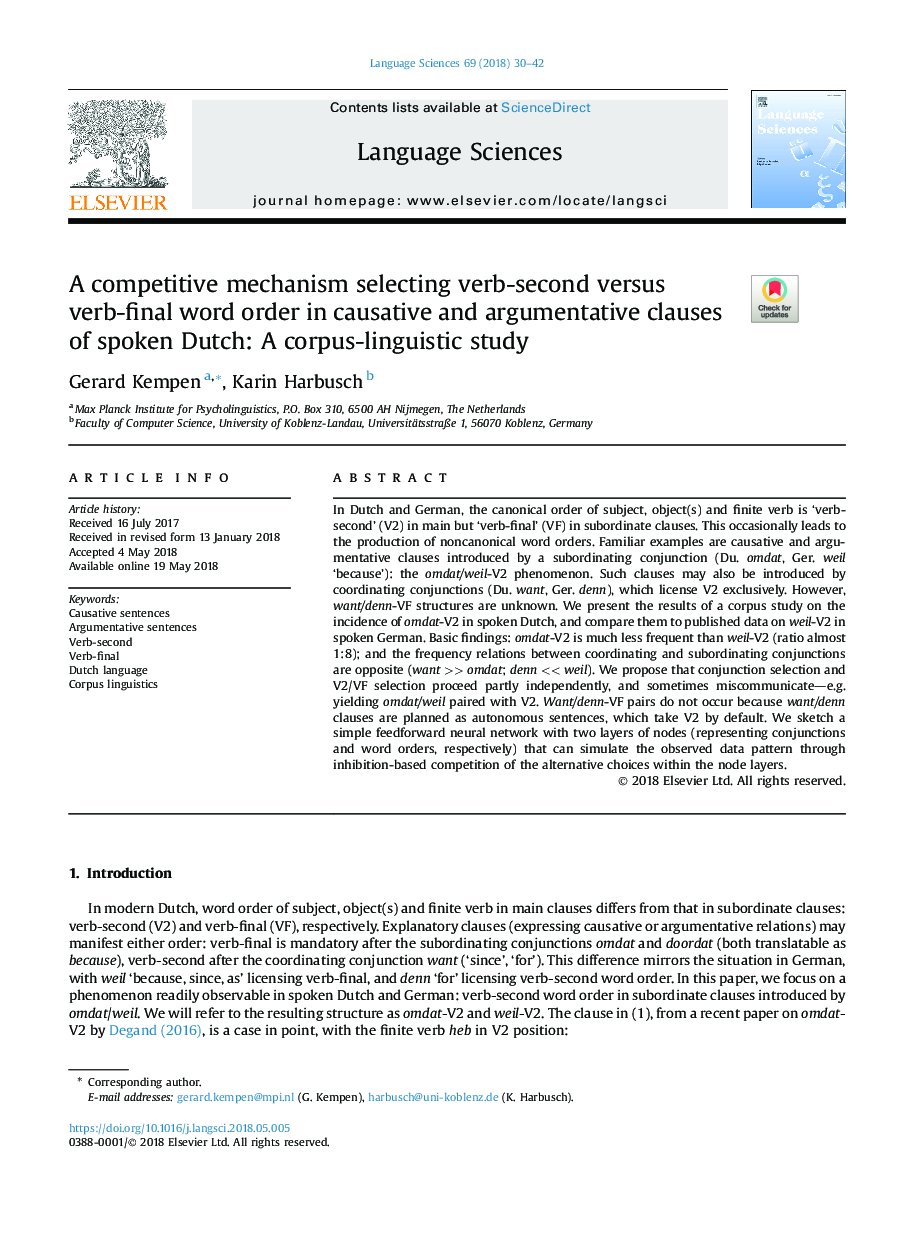| Article ID | Journal | Published Year | Pages | File Type |
|---|---|---|---|---|
| 8942550 | Language Sciences | 2018 | 13 Pages |
Abstract
In Dutch and German, the canonical order of subject, object(s) and finite verb is 'verb-second' (V2) in main but 'verb-final' (VF) in subordinate clauses. This occasionally leads to the production of noncanonical word orders. Familiar examples are causative and argumentative clauses introduced by a subordinating conjunction (Du. omdat, Ger. weil 'because'): the omdat/weil-V2 phenomenon. Such clauses may also be introduced by coordinating conjunctions (Du. want, Ger. denn), which license V2 exclusively. However, want/denn-VF structures are unknown. We present the results of a corpus study on the incidence of omdat-V2 in spoken Dutch, and compare them to published data on weil-V2 in spoken German. Basic findings: omdat-V2 is much less frequent than weil-V2 (ratio almost 1:8); and the frequency relations between coordinating and subordinating conjunctions are opposite (want >> omdat; denn << weil). We propose that conjunction selection and V2/VF selection proceed partly independently, and sometimes miscommunicate-e.g. yielding omdat/weil paired with V2. Want/denn-VF pairs do not occur because want/denn clauses are planned as autonomous sentences, which take V2 by default. We sketch a simple feedforward neural network with two layers of nodes (representing conjunctions and word orders, respectively) that can simulate the observed data pattern through inhibition-based competition of the alternative choices within the node layers.
Keywords
Related Topics
Social Sciences and Humanities
Arts and Humanities
Language and Linguistics
Authors
Gerard Kempen, Karin Harbusch,
